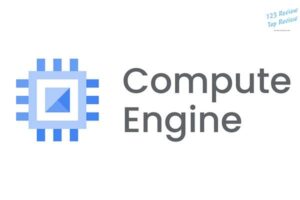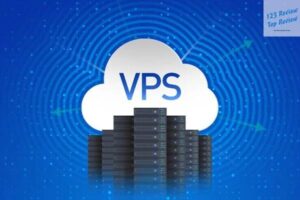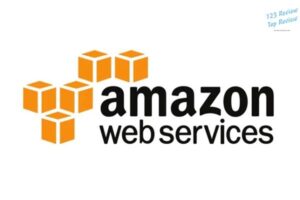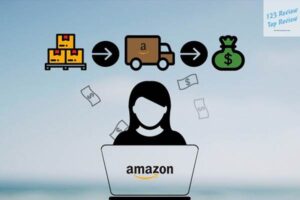In this article, 123 Review explores DigitalOcean’s comprehensive suite of cloud solutions, including Droplets, managed databases, Kubernetes, and networking features.
Additionally, it covers pricing, security best practices, and step-by-step guides for setting up and optimizing your cloud infrastructure. Whether you’re new to cloud computing or looking to enhance your current setup, this guide provides valuable insights into leveraging DigitalOcean for your projects.
Understanding DigitalOcean’s Services
DigitalOcean is a cloud infrastructure provider that has rapidly gained popularity for its simplicity, efficiency, and developer-friendly features. Whether you’re a startup, a growing business, or an individual developer, DigitalOcean offers a wide array of services designed to meet your needs. This comprehensive guide delves into the various services DigitalOcean offers, helping you understand how to leverage them effectively.
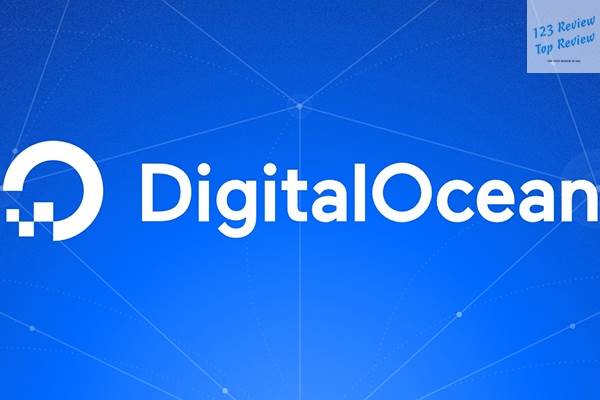
Cloud Computing Solutions
At the heart of DigitalOcean’s offerings is its cloud computing solutions, which are designed to provide scalable and efficient environments for deploying, managing, and scaling applications. The core product in this category is the Droplet, a highly customizable virtual private server (VPS). Droplets are available in several configurations, catering to different performance and resource requirements.
Types of Droplets:
- Standard Droplets: Ideal for general-purpose applications, these Droplets offer a balance of memory, CPU, and storage, making them suitable for hosting websites, small databases, and development environments.
- General Purpose Droplets: These provide a balanced ratio of memory to CPU, suitable for production environments requiring consistent performance.
- CPU-Optimized Droplets: Tailored for compute-intensive tasks such as machine learning, batch processing, or video encoding, these Droplets offer higher CPU performance to handle demanding workloads efficiently.
- Memory-Optimized Droplets: Designed for applications that require significant memory, such as high-performance databases and in-memory caching systems, these Droplets offer more RAM per CPU.
Additional Cloud Services:
- Block Storage: DigitalOcean offers scalable block storage, which can be attached to Droplets to provide additional disk space. This is particularly useful for databases, file storage, and applications requiring persistent storage.
- Object Storage (Spaces): DigitalOcean’s Spaces service provides scalable object storage ideal for storing large amounts of unstructured data, such as media files, backups, and static web content.
- Load Balancers: To ensure high availability and distribute traffic across multiple Droplets, DigitalOcean provides managed load balancers that are easy to set up and integrate into your cloud architecture.
Managed Database Options
For developers and businesses requiring reliable and scalable database solutions, DigitalOcean offers managed databases that simplify database administration and ensure high availability.
Supported Databases:
- PostgreSQL: One of the most advanced and versatile open-source relational databases, suitable for a wide range of applications.
- MySQL: A popular open-source database known for its reliability, scalability, and ease of use, particularly in web applications.
- Redis: An in-memory data structure store used as a database, cache, and message broker, known for its high performance and low latency.
Key Features:
- Automated Backups: DigitalOcean’s managed database service includes automated daily backups, with the option to perform manual backups as needed. These backups are stored securely and can be restored with a few clicks, ensuring data integrity and recovery in case of failure.
- High Availability: The managed database service provides automated failover, meaning that if the primary database instance fails, a standby instance automatically takes over, minimizing downtime.
- Scalability: You can easily scale your database vertically (increasing resources for a single instance) or horizontally (adding read replicas) based on the growing demands of your applications.
Kubernetes and Container Deployment
In recent years, containerization has become a cornerstone of modern application development, allowing developers to package applications and their dependencies into containers that can run consistently across different environments. DigitalOcean offers a fully managed Kubernetes service that simplifies the deployment, management, and scaling of containerized applications.
Key Benefits of DigitalOcean Kubernetes:
- Ease of Use: DigitalOcean’s managed Kubernetes service provides an intuitive interface that simplifies cluster creation and management. You can deploy a Kubernetes cluster in minutes, with pre-configured nodes that are ready to run your containers.
- Automated Upgrades and Patching: DigitalOcean handles the underlying infrastructure’s maintenance, including automated upgrades and patching of the Kubernetes control plane and nodes, reducing the operational burden on your team.
- Scalability: The service supports horizontal scaling, allowing you to add or remove nodes based on your application’s needs. Additionally, Kubernetes auto-scaling ensures that your workloads can automatically adjust to changing traffic patterns.
- Integrations and Add-ons: DigitalOcean Kubernetes integrates with various tools and services, including monitoring, logging, and CI/CD pipelines, enabling you to build a comprehensive DevOps workflow.
Networking Features and Benefits
A robust networking infrastructure is essential for secure, efficient, and high-performance cloud operations. DigitalOcean provides a range of networking features designed to meet the needs of modern applications.
Key Networking Services:
- Virtual Private Cloud (VPC): DigitalOcean’s VPC feature allows you to create isolated networks within your account, providing an additional layer of security. Resources within a VPC can communicate with each other securely and privately, while also connecting to the internet as needed.
- Floating IPs: Floating IPs are publicly accessible static IP addresses that you can quickly assign to any Droplet. They are particularly useful for maintaining high availability and minimizing downtime during upgrades or maintenance by allowing you to easily reroute traffic to a new server.
- Cloud Firewalls: DigitalOcean’s cloud firewalls provide a critical security layer by allowing you to define rules that control inbound and outbound traffic for your Droplets. These firewalls can be managed through the DigitalOcean control panel, with the ability to create rules based on IP addresses, ports, and protocols.
- Content Delivery Network (CDN): To enhance the performance of web applications, DigitalOcean integrates with popular CDNs like Cloudflare. CDNs distribute your content across multiple edge locations globally, reducing latency and improving load times for users regardless of their location.
Pricing and Cost Management
DigitalOcean is known for its straightforward and transparent pricing model, making it a popular choice among startups, small businesses, and individual developers. Understanding how to manage costs and optimize your usage is essential for making the most of the platform.
Breakdown of Plans and Pricing Tiers
DigitalOcean offers a variety of plans to cater to different needs and budgets. Each service—whether it’s Droplets, managed databases, or Kubernetes—is priced independently, allowing you to customize your infrastructure according to your requirements.
Droplet Pricing:
- Basic Droplets: Starting at $4 per month, these are perfect for small projects, development environments, and lightweight applications.
- General Purpose Droplets: Priced from $60 per month, these are designed for more demanding applications that require balanced CPU and memory resources.
- CPU-Optimized Droplets: These start at $40 per month and are tailored for compute-intensive tasks, offering more CPU power per dollar than standard Droplets.
- Memory-Optimized Droplets: These Droplets, starting at $75 per month, are ideal for applications that require large amounts of memory, such as high-performance databases and in-memory caches.
Additional Services Pricing:
- Managed Databases: Pricing starts at $15 per month for the smallest instance, with costs increasing based on the resources (CPU, memory, and storage) required.
- Kubernetes: The managed Kubernetes service does not have additional management fees—you’re only charged for the underlying Droplets and block storage used by your Kubernetes nodes.
- Block Storage: Priced at $0.10 per GB per month, block storage is an affordable way to expand your Droplet’s disk space.
- Object Storage (Spaces): Spaces are priced at $5 per month for 250 GB of storage, with additional storage billed at $0.02 per GB.
Discounts for Startups and Educational Institutions
DigitalOcean offers special programs and discounts aimed at helping startups and educational institutions get the most out of their cloud infrastructure.
Hatch Program for Startups:
- The Hatch program is designed to support early-stage startups by providing up to $100,000 in cloud credits, along with access to mentorship, technical support, and exclusive community events. This program is ideal for startups looking to build and scale their products without the initial infrastructure costs.
Educational Discounts:
- DigitalOcean partners with GitHub to offer the GitHub Student Developer Pack, which includes $100 in cloud credits for students. This program is perfect for students learning about cloud computing, web development, and software engineering, providing them with hands-on experience on a leading cloud platform.
Cost Optimization Strategies
Optimizing your cloud spend is crucial for maximizing your investment in DigitalOcean. Here are some strategies to help you manage and reduce costs:
- Monitor Resource Usage: Use DigitalOcean’s monitoring tools to track the performance and usage of your Droplets and other resources. This allows you to identify underutilized resources that can be scaled down or consolidated to reduce costs.
- Choose the Right Droplet Size: Start with the smallest Droplet size that meets your needs, and scale up as necessary. Oversizing your Droplet can lead to unnecessary costs, so it’s essential to match the resources to your actual usage.
- Leverage Autoscaling: If you’re using Kubernetes, take advantage of auto-scaling to automatically adjust the number of nodes based on demand. This ensures that you only pay for the resources you need during peak times, while scaling down during off-peak periods.
- Use Backups and Snapshots Wisely: While backups and snapshots are essential for disaster recovery, they can also contribute to your overall costs. Regularly review and delete old backups or snapshots that are no longer needed to avoid unnecessary storage charges.
- Optimize Storage: Consider using object storage (Spaces) for static content and large files, which is more cost-effective than block storage for certain use cases. Additionally, regularly audit your storage to ensure that you’re not paying for unused or redundant data.
Understanding Invoicing and Billing
DigitalOcean’s billing system is designed to be transparent and straightforward. You’re billed monthly based on your usage, with a detailed invoice provided at the end of each billing cycle.
Key Billing Concepts:
- Hourly vs. Monthly Billing: DigitalOcean bills on an hourly basis up to a monthly cap. This means that if you use a Droplet for only part of the month, you’re billed for the hours used, up to the maximum monthly rate.
- Billing Alerts: To help you stay on top of your spending, DigitalOcean allows you to set billing alerts. These alerts notify you when your usage reaches a certain threshold, helping you avoid unexpected charges.
- Credit Card Payments: Payments are typically processed via credit card, but DigitalOcean also supports PayPal and ACH transfers for larger accounts or special cases.
Setting Up and Configuring DigitalOcean
Getting started with DigitalOcean is a straightforward process, but it’s essential to follow best practices to ensure your infrastructure is set up securely and efficiently.
Step-by-Step Account Creation
Creating a DigitalOcean account is the first step in accessing the platform’s wide range of cloud services. The process is simple and can be completed in a few minutes.
- Sign Up: Visit the DigitalOcean website and click on the “Sign Up” button. You’ll be prompted to enter your email address and create a password. Alternatively, you can sign up using your Google or GitHub account for a quicker registration process.
- Email Verification: After signing up, DigitalOcean will send a verification email to the address you provided. Click the verification link in the email to confirm your account.
- Payment Information: Once your email is verified, you’ll need to add payment information. DigitalOcean accepts credit cards, PayPal, and ACH transfers. Your account will not be charged until you start using resources.
- Explore the Dashboard: After setting up your payment information, you can log in to the DigitalOcean dashboard, where you can start creating Droplets, setting up managed databases, and exploring other services.
Setting Up Droplets for Different Needs
Droplets are the core building blocks of your DigitalOcean infrastructure. Setting up Droplets tailored to your specific needs is crucial for optimal performance and cost-efficiency.
Creating a Droplet:
- Choose an Image: Start by selecting an operating system image (e.g., Ubuntu, CentOS, Fedora) or a pre-configured application image (e.g., WordPress, LAMP stack) from the DigitalOcean marketplace.
- Select a Plan: Choose the appropriate Droplet plan based on your resource requirements. If you’re unsure, you can start with a Standard Droplet and upgrade later as needed.
- Add Block Storage (Optional): If your application requires additional storage, you can attach block storage volumes to your Droplet during the setup process.
- Choose a Data Center: Select the data center region closest to your target audience to reduce latency and improve performance.
- Finalize and Create: Review your selections, configure any additional settings (e.g., SSH keys, backups), and click “Create Droplet.” Your Droplet will be ready in minutes.
Use Cases for Different Droplet Types:
- Standard Droplets: Ideal for hosting websites, blogs, and development environments.
- General Purpose Droplets: Suitable for more demanding applications such as e-commerce sites, CMS platforms, and medium-sized databases.
- CPU-Optimized Droplets: Best for compute-intensive tasks like data processing, video encoding, and scientific simulations.
- Memory-Optimized Droplets: Perfect for high-performance databases, in-memory caches, and large-scale analytics workloads.
Configuring Networking: VPCs and Firewalls
Properly configuring your network is essential for securing your DigitalOcean infrastructure and ensuring optimal performance.
Setting Up Virtual Private Clouds (VPCs):
- Create a VPC: Navigate to the networking section of the DigitalOcean dashboard and create a new VPC. You can choose to use the default VPC or create a custom one with specific IP address ranges.
- Assign Resources to the VPC: Once the VPC is created, you can assign your Droplets and other resources to it, allowing them to communicate securely within the VPC.
- Configure Routing: If needed, set up routing rules to control how traffic flows between different subnets within the VPC or to external networks.
Implementing Firewalls:
- Create Firewall Rules: In the networking section, create a new firewall and define rules to control inbound and outbound traffic. For example, you can allow HTTP/HTTPS traffic while blocking all other ports.
- Assign Firewalls to Droplets: After creating the firewall rules, assign the firewall to the appropriate Droplets. You can apply the same firewall to multiple Droplets, ensuring consistent security across your infrastructure.
Managing SSL Certificates
SSL certificates are crucial for securing data transmission between your servers and clients, particularly for web applications handling sensitive information.
Obtaining and Installing SSL Certificates:
- Free SSL with Let’s Encrypt: DigitalOcean offers a free Let’s Encrypt SSL certificate that can be installed on your Droplet with just a few commands. Let’s Encrypt certificates are valid for 90 days and can be automatically renewed.
- Using Paid SSL Certificates: If you require more advanced features or longer validity periods, you can purchase SSL certificates from a trusted Certificate Authority (CA) and manually install them on your Droplet.
- Configuring SSL on Web Servers: After obtaining the certificate, configure your web server (e.g., Nginx, Apache) to use SSL, ensuring that all traffic is encrypted. You can also set up HTTP to HTTPS redirection to enforce secure connections.
Managing Certificate Renewals:
- Automated Renewals: For Let’s Encrypt certificates, use the Certbot tool to automate the renewal process, ensuring that your certificates are always up to date.
- Manual Renewals: For paid certificates, keep track of the expiration date and renew them before they expire. Update your web server configuration with the new certificate details after renewal.
Security Features and Best Practices
Security is a top priority when managing cloud infrastructure. DigitalOcean provides a range of security features, and following best practices ensures that your deployments remain secure.
Data Protection and Compliance
Protecting sensitive data and ensuring compliance with industry standards is critical for businesses, particularly those handling personal or financial information.
Encryption at Rest and In Transit:
- Data at Rest: DigitalOcean automatically encrypts data stored on block storage and managed databases, ensuring that your data is protected even if the underlying storage hardware is compromised.
- Data in Transit: Use SSL/TLS certificates to encrypt data transmitted between your Droplets and clients, protecting it from interception by malicious actors.
Compliance Certifications:
- GDPR Compliance: DigitalOcean is fully compliant with the General Data Protection Regulation (GDPR), ensuring that personal data is handled securely and in accordance with European privacy laws.
- HIPAA Compliance: While DigitalOcean can be used to build HIPAA-compliant applications, you’ll need to implement additional security measures and sign a Business Associate Agreement (BAA) with DigitalOcean to ensure compliance.
Firewall and DDoS Protection
Firewalls and DDoS protection are essential for defending your infrastructure against external threats.
Implementing Cloud Firewalls:
- DigitalOcean’s cloud firewalls provide a layer of security by allowing you to define rules that control traffic to your Droplets. Firewalls are managed through the DigitalOcean dashboard and can be applied to multiple resources simultaneously.
- Best Practices: Restrict access to your Droplets by only allowing traffic from trusted IP addresses and necessary ports. Regularly review and update your firewall rules to address new security threats.
DDoS Protection:
- DigitalOcean offers basic DDoS protection as part of its infrastructure, helping to mitigate small-scale attacks. For more robust protection, consider integrating a third-party DDoS mitigation service, such as Cloudflare or Akamai, which can absorb and filter malicious traffic before it reaches your servers.
Best Practices for Securing Deployments
Following best practices for securing your deployments is crucial for protecting your applications and data.
SSH Key Authentication:
- Use SSH Keys: Instead of relying on passwords, use SSH keys for secure authentication to your Droplets. This provides a higher level of security, as SSH keys are more difficult to compromise than passwords.
- Disable Root Login: To further secure your Droplets, disable root login and create a non-root user with sudo privileges for administrative tasks.
Regular Security Audits:
- Perform Security Audits: Regularly audit your infrastructure to identify and address security vulnerabilities. This includes reviewing firewall rules, access logs, and software versions.
- Update Software: Ensure that your operating system, software packages, and applications are regularly updated to the latest versions, which include important security patches.
Regular Monitoring and Updates
Ongoing monitoring and updates are essential for maintaining the security and performance of your DigitalOcean infrastructure.
Monitoring Tools:
- Use Monitoring Tools: DigitalOcean offers built-in monitoring tools that provide insights into your Droplet’s performance, including CPU usage, memory consumption, and disk I/O. You can also integrate third-party monitoring tools, such as Datadog or New Relic, for more advanced monitoring capabilities.
Automated Updates:
- Automate Updates: Use configuration management tools, such as Ansible or Chef, to automate software updates and patch management across your infrastructure. This ensures that your servers are always running the latest security updates without manual intervention.
Troubleshooting Common Issues
Despite your best efforts, issues may arise that require troubleshooting. DigitalOcean provides several tools and resources to help you resolve common problems quickly.
Connection Issues with Droplets
Connection issues are one of the most common problems users encounter when managing Droplets. These issues can arise from misconfigured firewalls, incorrect SSH settings, or network problems.
Troubleshooting Steps:
- Check Firewall Rules: Ensure that your firewall rules allow incoming SSH traffic on port 22. If you’ve changed the default SSH port, make sure the new port is open in your firewall.
- Verify SSH Keys: If you’re using SSH key authentication, ensure that the correct public key is added to your Droplet’s
authorized_keysfile. Check for any typos or incorrect formatting. - Test Network Connectivity: Use the
pingandtraceroutecommands to test network connectivity between your local machine and the Droplet. If you’re unable to reach the Droplet, there may be an issue with the data center’s network or your local ISP.
Resolving Database Connection Problems
Database connection problems can occur due to misconfigured settings, network issues, or resource constraints.
Common Issues and Solutions:
- Check Database Credentials: Verify that the database username, password, and host are correctly configured in your application. Ensure that the user has the necessary privileges to access the database.
- Adjust Connection Limits: If your application is experiencing “too many connections” errors, consider increasing the maximum number of connections allowed by the database. You can adjust this setting in the database configuration file.
- Review Firewall Rules: Ensure that your database’s firewall rules allow incoming connections from your application server’s IP address. If you’re using a managed database, you can configure firewall rules in the DigitalOcean dashboard.
Application Deployment Errors
Deploying applications on DigitalOcean can sometimes result in errors, especially if the deployment process is complex or involves multiple services.
Troubleshooting Deployment Issues:
- Check Logs: Review the application logs for any error messages or warnings that could indicate the cause of the problem. Logs can be accessed directly on the Droplet or through monitoring tools.
- Verify Dependencies: Ensure that all required dependencies, such as libraries, packages, and environment variables, are correctly installed and configured on the Droplet.
- Test Locally: Before deploying to DigitalOcean, test your application in a local development environment to catch any issues early. This can help you identify and resolve problems before they affect your production deployment.
Support and Community Resources
If you encounter issues that you’re unable to resolve on your own, DigitalOcean offers a variety of support and community resources to help you.
DigitalOcean Support:
- Support Plans: DigitalOcean offers different support plans based on your needs, ranging from basic ticket-based support to premium 24/7 technical support with guaranteed response times.
- Knowledge Base: The DigitalOcean Knowledge Base contains a wealth of articles, guides, and tutorials that cover a wide range of topics, from basic setup instructions to advanced troubleshooting techniques.
Community Resources:
- Community Q&A: The DigitalOcean community forum is a valuable resource where you can ask questions and get answers from other users and DigitalOcean staff. The forum covers a wide range of topics, including Droplet management, networking, and application deployment.
- Tutorials: DigitalOcean’s community tutorials provide step-by-step instructions for a variety of tasks, including setting up servers, deploying applications, and configuring security features. These tutorials are written by both DigitalOcean staff and community members, offering diverse perspectives and solutions.
Integrating Third-Party Services
To extend the functionality of your DigitalOcean infrastructure, you can integrate a variety of third-party services that complement your cloud environment.
Using DigitalOcean with GitHub
Integrating DigitalOcean with GitHub allows you to streamline your development and deployment workflows, enabling continuous integration and continuous deployment (CI/CD).
Key Integration Features:
- Automated Deployments: Use GitHub Actions or other CI/CD tools to automate the deployment of your code to DigitalOcean Droplets or Kubernetes clusters whenever changes are pushed to your repository.
- Version Control: By linking your DigitalOcean projects with GitHub, you can manage your application’s source code and version history, making it easier to track changes and roll back if necessary.
- Collaboration: GitHub integration allows multiple developers to collaborate on the same project, with DigitalOcean providing the infrastructure for testing, staging, and production environments.
Integrating Content Delivery Networks (CDNs)
A Content Delivery Network (CDN) can significantly improve the performance of your web applications by caching and delivering content from servers closer to your users.
Popular CDN Integrations:
- Cloudflare: DigitalOcean easily integrates with Cloudflare, one of the most popular CDNs, providing features such as DDoS protection, SSL management, and content caching. Cloudflare’s global network ensures that your content is delivered quickly to users around the world.
- Fastly: Another option is Fastly, a CDN known for its real-time caching capabilities and extensive customization options. Fastly’s integration with DigitalOcean allows you to fine-tune how your content is cached and delivered, ensuring optimal performance.
Backup and Recovery Solutions
Backing up your data and having a recovery plan in place is essential for maintaining business continuity in the event of data loss or corruption.
Backup Options:
- DigitalOcean Backups: DigitalOcean offers automated backups for Droplets, which can be scheduled on a weekly basis. These backups are stored in the same data center as the Droplet and can be restored with a single click.
- Snapshots: Snapshots allow you to create on-demand backups of your Droplets or volumes at any time. Snapshots can be used to clone Droplets, create new ones from existing configurations, or restore data in the event of a failure.
Third-Party Backup Solutions:
- Veeam: Veeam provides advanced backup and disaster recovery solutions that can be integrated with DigitalOcean. Veeam’s tools offer features such as incremental backups, compression, and encryption, making it a robust option for enterprises.
- Acronis: Another option is Acronis, which offers cloud backup and recovery services with support for multiple platforms, including DigitalOcean. Acronis provides automated backup schedules, quick recovery times, and secure storage options.
Monitoring Tools Integration Options
Monitoring is critical for maintaining the health and performance of your DigitalOcean infrastructure. Integrating third-party monitoring tools can provide more granular insights and advanced features.
Popular Monitoring Tools:
- Datadog: Datadog is a cloud monitoring service that provides comprehensive insights into your infrastructure’s performance. It supports monitoring of servers, databases, applications, and more, with real-time dashboards and alerts.
- New Relic: New Relic offers application performance monitoring (APM) and infrastructure monitoring, allowing you to track the performance of your applications and underlying infrastructure. It also provides detailed transaction traces, error analysis, and user experience insights.
- Prometheus and Grafana: For those looking for open-source solutions, Prometheus and Grafana are popular choices. Prometheus is a monitoring and alerting toolkit, while Grafana is a data visualization tool that can display Prometheus metrics in customizable dashboards.
Conclusion
DigitalOcean offers a powerful and versatile cloud platform that caters to a wide range of users, from individual developers to large enterprises. By understanding and effectively utilizing the services and tools provided by DigitalOcean, you can build, deploy, and scale applications with confidence. Whether you’re just starting with cloud computing or looking to optimize your existing infrastructure, DigitalOcean provides the resources and support you need to succeed.
